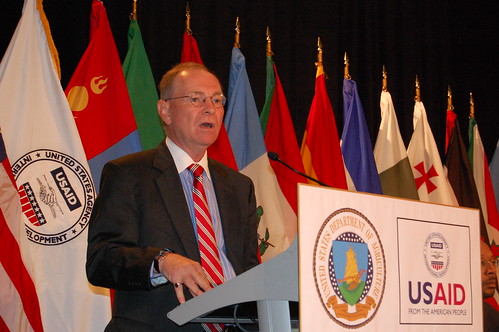
Written by Under Secretary for Farm and Foreign Agricultural Services Jim Miller
During this year’s International Food Aid and Development Conference (IFADC), food security featured prominently as both a major concern and a primary program focus for current and future USDA projects. Each year the IFADC brings together USDA, the U.S. Agency for International Development, private sector companies and voluntary organizations who collaborate throughout the year to provide America’s food aid and assistance to the world’s neediest people. This week I joined USDA and USAID leaders in Kansas City to address this important subject.
You may not be aware, but the United States is the largest provider of food assistance in the world. Over the past 10 years, we have supplied about one-half of total international food assistance, and in 2009 alone United States programs reached over 70 million people worldwide.
Even with America’s food aid experience and resources, the number of poor, hungry people continues to grow. In 2008, a supply and demand imbalance in global food systems raised international food prices and resulted in increased instability in food insecure countries. This served as a wake-up call to rich and poor countries alike that we need to begin reinvesting in our agricultural sectors.
Last year, the G8 leaders committed to combating food insecurity, a priority echoed by the Obama Administration’s pledge to invest $3.5 billion in the next three years and the whole-of-government Feed the Future (FTF) initiative. Agriculture plays an important role in this new approach. The majority of people in developing countries depend on it not only for food, but also as a main source of income and employment.
Public-private partnerships provide farmers technical assistance to form cooperatives, improve production, or storage and handling, and these practices and information can be passed on to future generations and larger groups. Through sustainable food programs that continue years after U.S. funding has ended, such as USDA’s McGovern-Dole Food for Education Program, the U.S. will increasingly seek new ways of using private money, businesses and trade to help struggling countries become self-sufficient in feeding their people.
With the number of chronically hungry people now surpassing one billion, we need a sustainable approach to answer the call of those in need, sharing America’s bounty and knowledge with those less fortunate. USDA sees its engagement in Feed the Future as central to achieving that goal. Our unique capacities in research, extension, and institutional capacity building can make an important contribution to long term food security.
